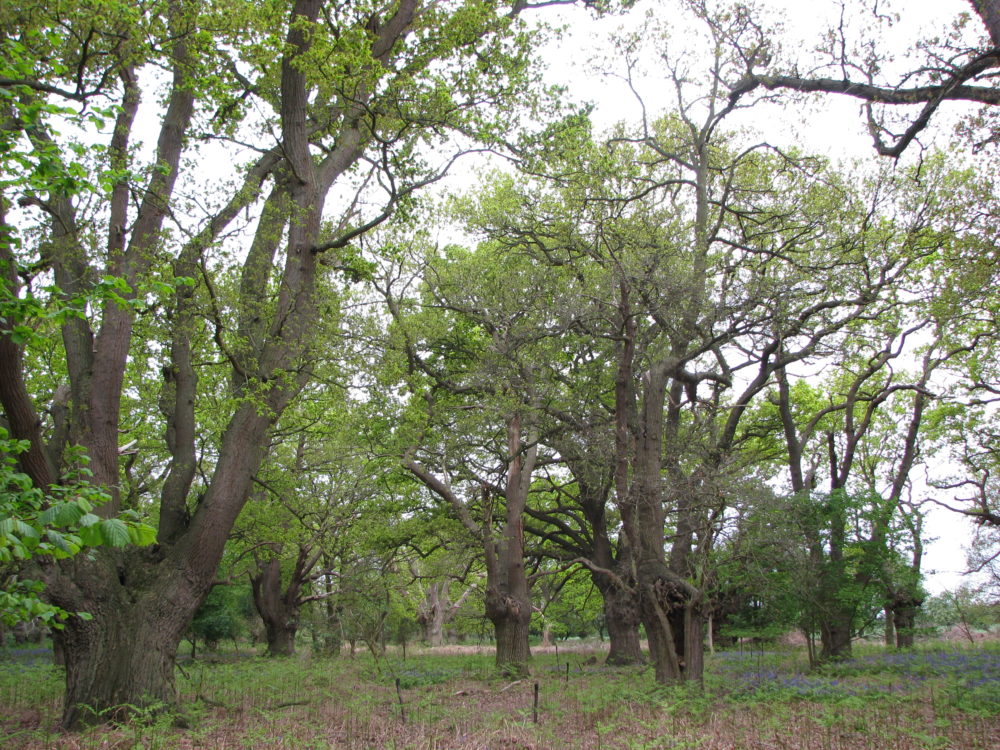Historic Management of Wood Pasture and Parkland

Understanding the historic management of a site can often guide our future management decisions to promote the vital habitat continuity.
If you own or manage a wood pasture or parkland site, you may be lucky enough to have old site maps or management plans detailing how the site has been managed in the past. These could be used to guide future management decisions, such as planting plans, especially where historical context is an important feature of your site.
Even when no historical documents are available, the remnants of past management may still be seen in the old trees around you. Pollards for example are very recognisable with their large bowls and multi stemmed shape. Pollarding is the practice of periodic cutting of the tree limbs for animal fodder or charcoal, it extends the life of the tree and provides a lot of dead wood habitat for wildlife within its trunks. If these trees are no longer in a cutting cycle, depending on the time since pollarding has lapsed, you may want to try to bring some back into a rotation. However, the success rate is not high so you will need to seek specialist advice. You might also consider creating new pollard trees with some of the younger trees on site.

